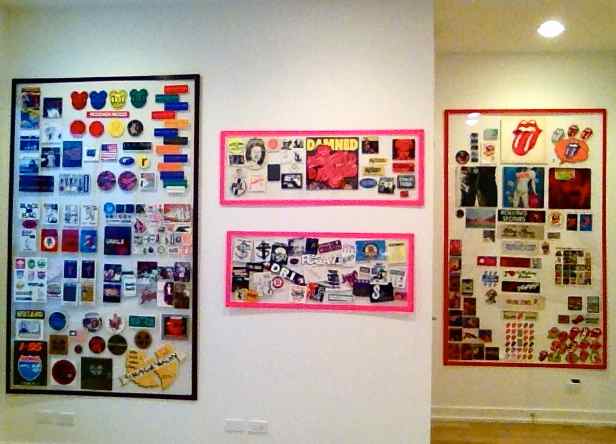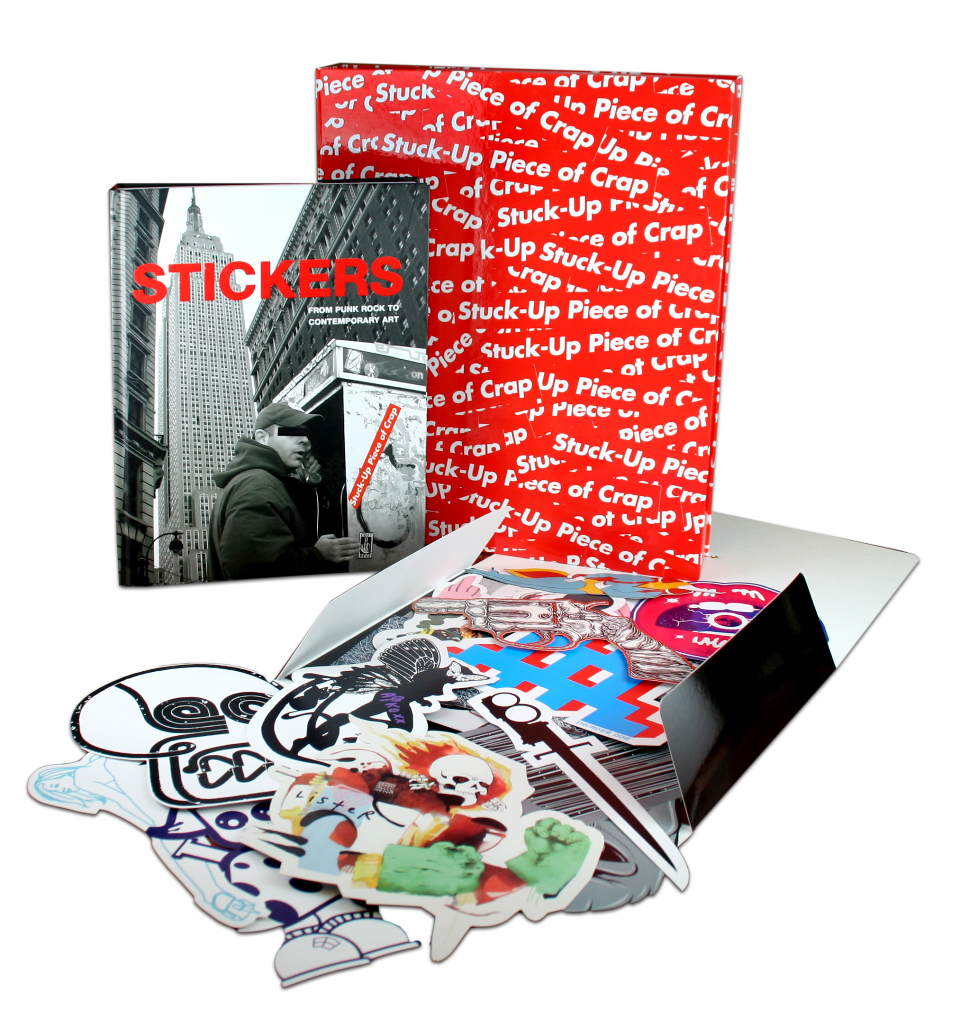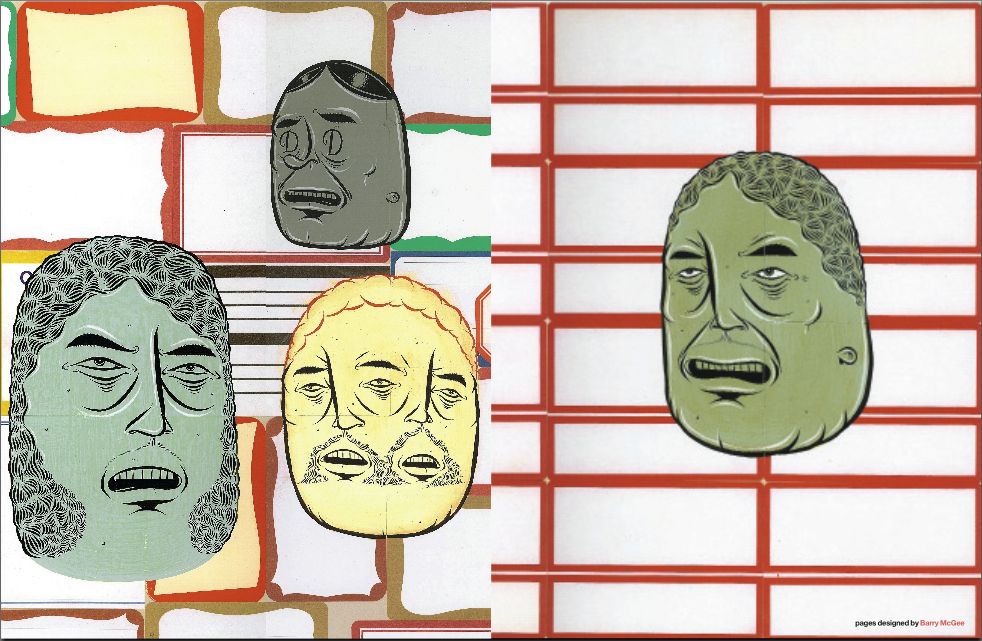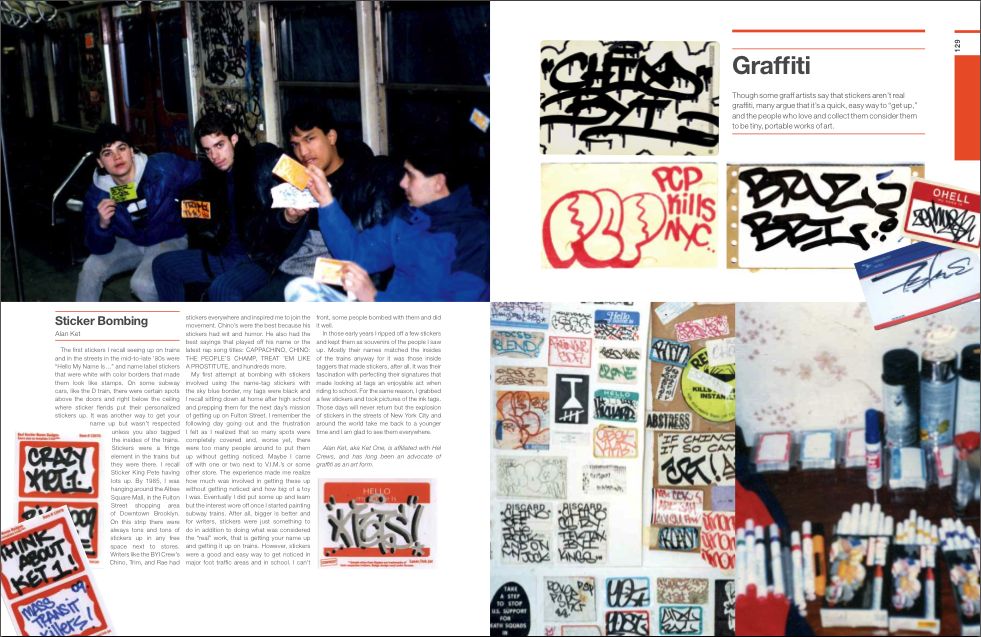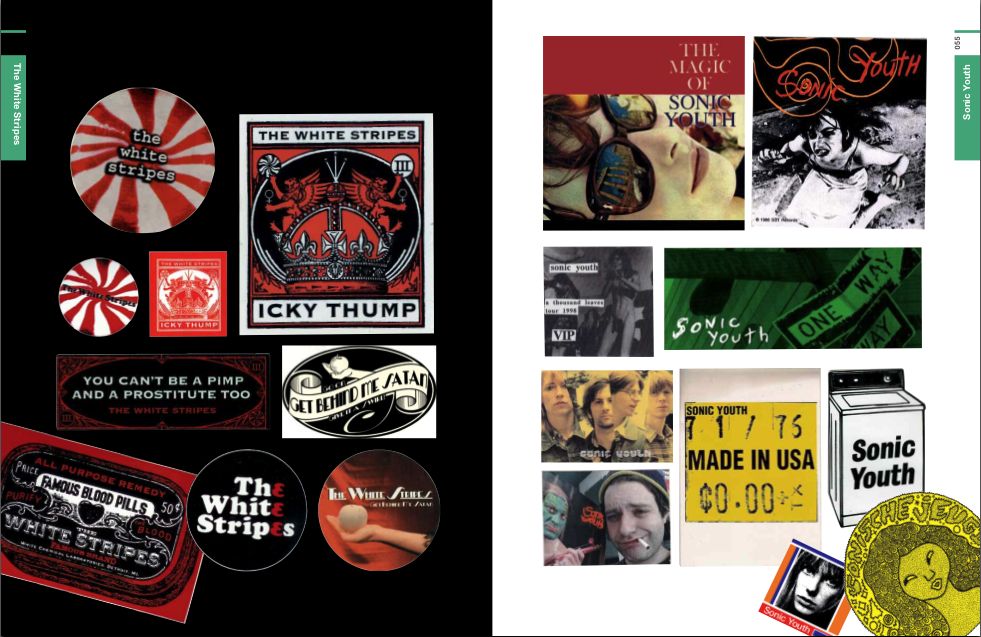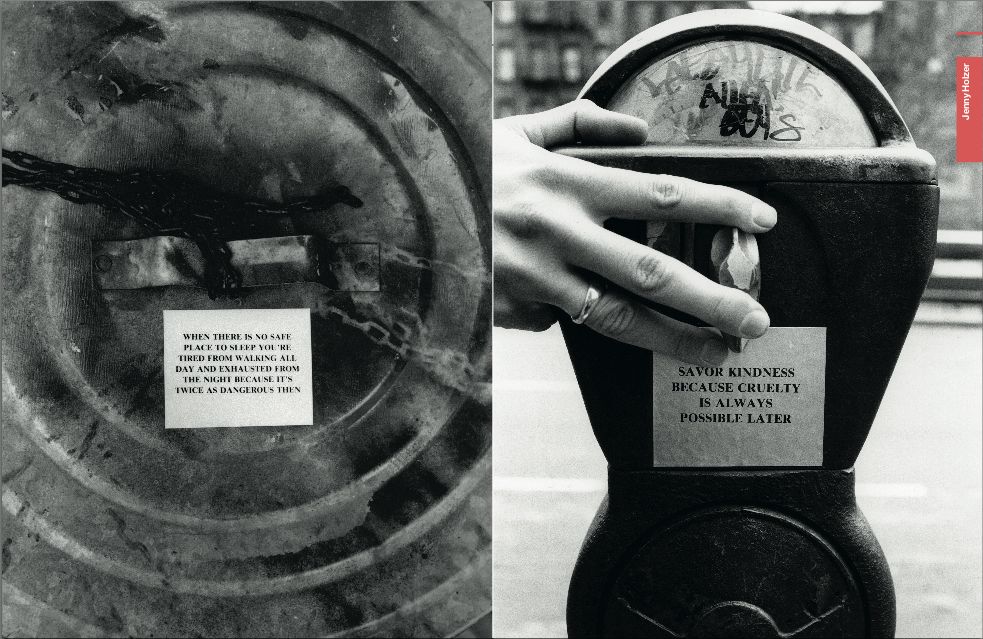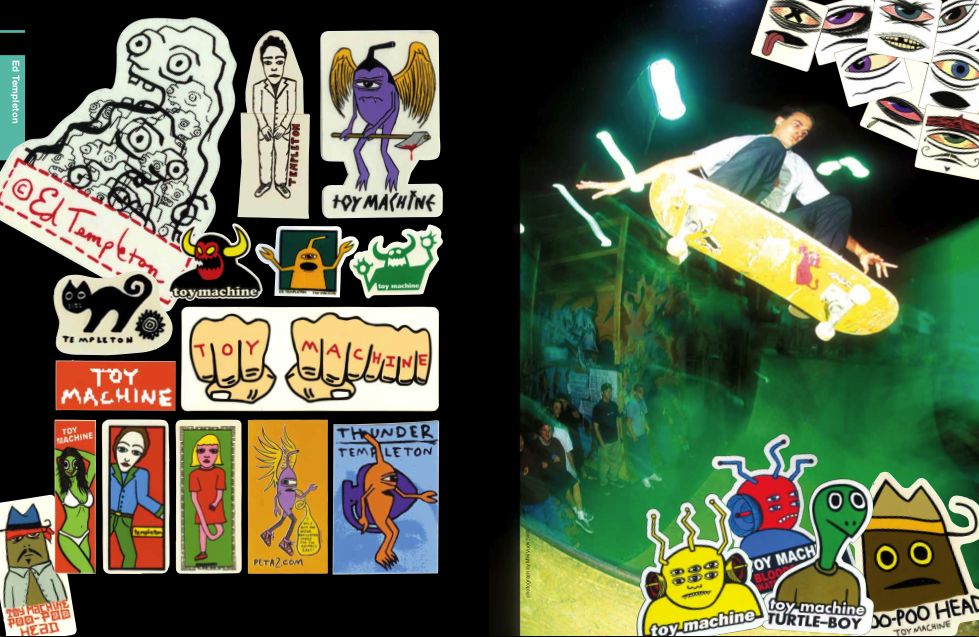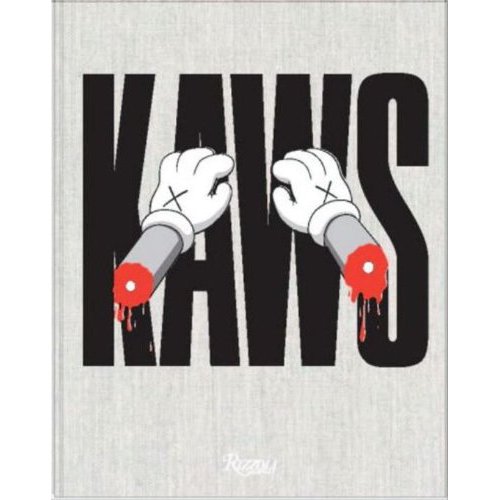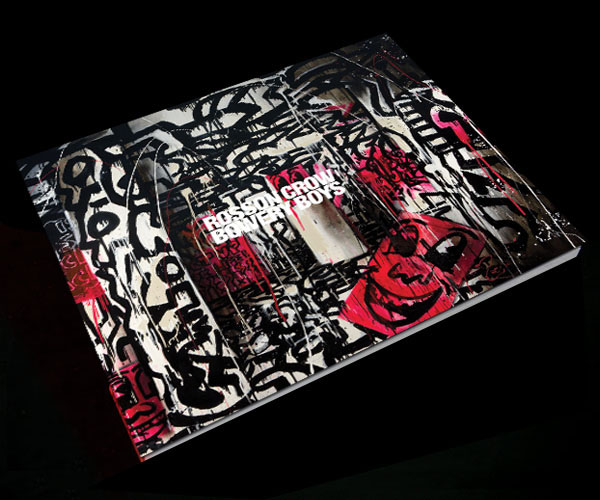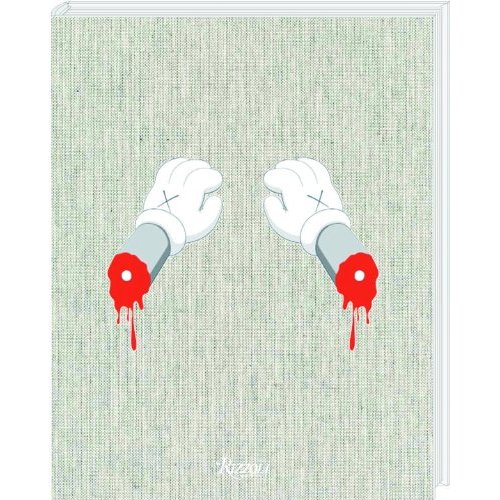Archive for the 'Publications' Category
Thursday, February 16th, 2012
Print/Out: MoMA surveys contemporary printing
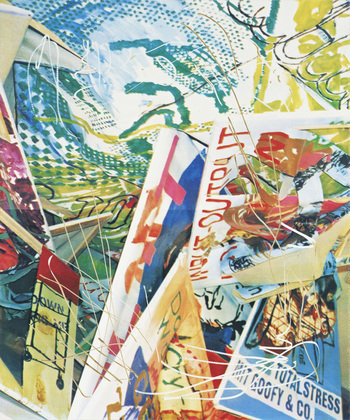
Martin Kippenberger, Content on Tour (Inhalt auf Reisen), 1992, Screenprint mounted on plywood, with unique alterations by the artist, 70 7/8 x 59" (180 x 150 cm). Publisher and printer: Edition Artelier, Graz, Austria. © Estate Martin Kippenberger, Galerie Gisela Capitain, Cologne. Photograph: Lothar Schnepf, Cologne.
Earlier this week I attended the opening reception for Print/Out, MoMA’s latest exhibit to highlight printing practices, this time, surveying contemporary projects and series of the last two decades. Culled almost exclusively from the museum’s Department of Prints and Illustrated Books, the exhibit is as visually compelling as it is informative. A section devoted to the work of Edition Jacob Samuel, highlighted by a display and video demonstration of his portable aquatint box and Marina Abramovic portfolio, offers a rare glimpse at the technical artistry of the print master and his practice. In Harper’s Pictorial History of the Civil War (Annotated), Kara Walker’s solid black silhouette figures find new context, silkscreened against reproductions of an 1886 publication of Civil War prints. Selections from Damien Hirst’s 1999 Last Supper portfolio remind me why he was once interesting. Danish collective Superflex (who launch a solo show at Peter Blum next month) have set up a functioning workshop, inviting visitors to create replicas of iconic modern lamp designs by selecting a design and pasting computer print outs onto small wooden box frames. The works will be periodically hung from the gallery’s ceiling, growing an installation of art reproductions over time. The participatory piece in flux may just compel me visit again in a few weeks.

Jacob Samuel’s portable aquatint box.
Friday, January 20th, 2012
The Stuck Up Gallery Tour
This weekend, DB Burkeman unveils the 2nd installment of the Stuck Up Tour, a traveling exhibit that accompanies the meticulous ethnography of Stuck Up Piece of Crap (Rizzoli), his book chronicling the history of sticker art in pop culture. Those in Chicago should brave the storm and head out to Maxwell Colette Gallery on Saturday Jan 21, for an afternoon (1-3pm) book signing featuring DB and celebrated photographer, Martha Cooper.
Coinciding with the show are a number of exiting new additions. First, there’s the free Stuck Up iPhone ap, which allows users to browse, upload and geotag stickers around the globe. It is a fascinating addition to the overall project. Next, a new video short called Gate Wars (watch below) presents a mesmerizing montage that weaves together a tale of competition and sticker rivalry amongst New York City’s locksmiths. It really is worth viewing. And don’t forget the swag! – go cop a truly cool t-shirt here.
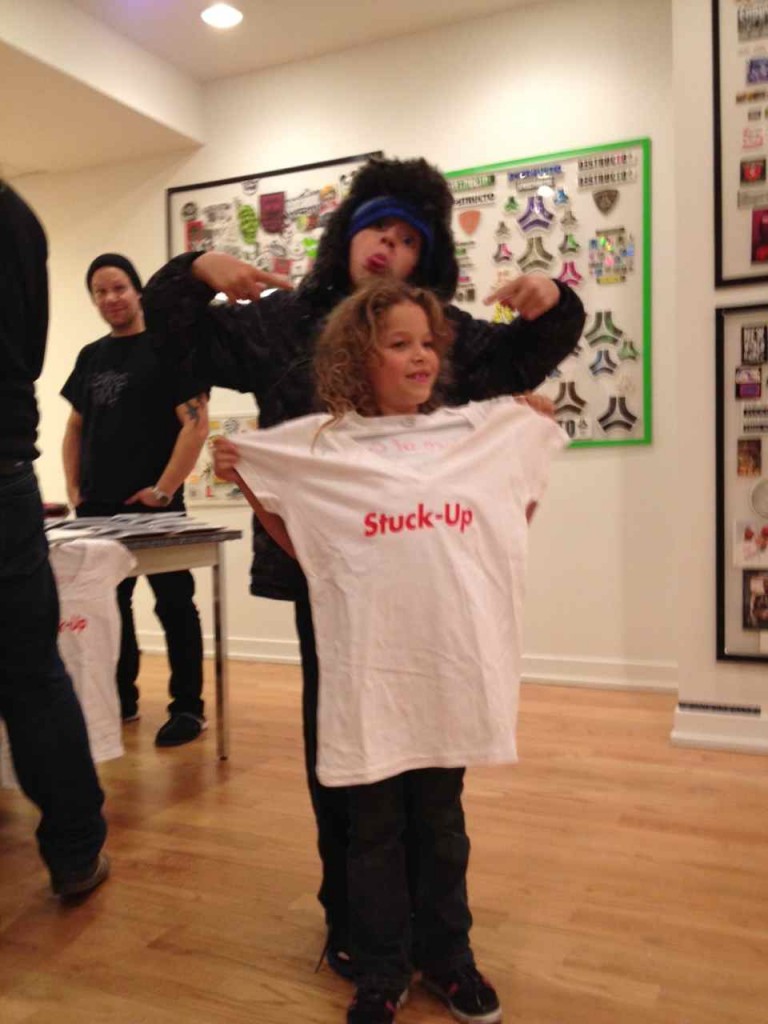
Friday, November 26th, 2010
Nieves Launches App
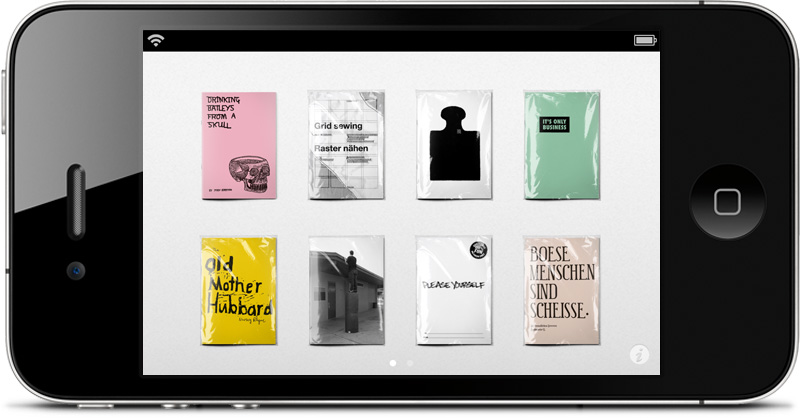
We are huge fans Nieves. Since 2001 the independent Swiss publisher has collaborated with an eclectic mix of talent, releasing a consistently interesting and high quality array of limited artist zines and books. Now, Nieves goes mobile with the launch of an iPhone/iPad app. Though initially excited over the potential to have on-the-go access to their entire back catalog and out of print publications, we were quickly disillusioned. While the application itself is free to download, digital zines wil run you .99¢ a pop, making this pretty worthless unless you plan on shelling out enough money to build up a useful archive. It also seems to run contrary to the very aesthetic and mission Nieves has been championing for the past decade. Oh well. We still love you Nieves.
Tuesday, October 5th, 2010
Peel Slowly and Read:: TAC Speaks with DB Burkeman about his new book
This week Rizzoli releases Stickers: Stuck Up Piece of Crap – From Punk Rock to Contemporary Art. The publication is a massive chronicling of the history of sticker culture, with more than 4,000 images and 30 contributing writers including Martha Cooper, Stanley Donwood, Shepard Fairey, Carlo McCormick, Clayton Patterson, Stephen Powers(ESPO) and Swoon. I got together with the book’s creator, my close friend DB Burkeman, to geek out about art, music, pop culture, and things to come.
JN: A lot of people know you from your pioneering contributions to Drum and Bass and involvement in the music world, but we first met down in Miami during Art Basel and hit it off geeking out over art together. I remember being excited to meet another musician who was finding himself more and more obsessed with contemporary art. When did you start paying attention to art. Was music your entry point?
DB: I was psyched to meet you too. You were my first real art geek friend! For me, music and visual art have always been totally connected. I even feel that they are really just different expressions of a similar process. As a nerdy kid I spent many hours lost in the gatefold sleeves of new albums by my favorite bands. It was as important to the ritual and enjoyment process as listening to the record. I think I actually wanted to be an artist, before I wanted to be a DJ, but not being able to draw for shit kind of hindered that option. I wanted to be a rock star too, but couldn’t play an instrument well either. So I went for taking pictures of rock stars instead. Then I heard a DJ that gave me an epiphany. When I was putting out mix-tapes and mix CD’s I always paid super attention to how they looked. I’m always shocked when someone puts out a great record that looks like poo. I really hated the creation and take over of the CD format. That real estate of the twelve-inch was reduced to a measly five-inch cover with nasty plastic. As for MP3’s, yeah, great for mobility, but no visual presence at all. I’m sure you and your readers are aware of the massive revival of vinyl. I was talking to someone from ADA (Alternative Distribution Alliance) last week and he said that pretty much every indie band releases their albums in a vinyl format now.
JN: Music was the catalyst for me too. High school was the first time I can recall wanting to find out about who the certain artists were behind art. I needed to know everything about a record – from the studio it was recorded in and who was at the mixing board, to who was behind the imagery. I really love the section in your book with old SST Records stickers from bands like Black Flag, Meat Puppets and Husker Du. Indie labels like that were definitely the first art I paid attention to. Sonic Youth was another big one for me. The records they did with artists like Raymond Pettibon, Richard Kern and Mike Mills became the first artists I started to follow and look in to.
DB: Well, I’m older than you. I wanted to know about who did Led Zep covers and go work for them. I actually applied for a job too. Hypgnosis wrote back and said I needed a university degree. Then I discovered Punk Rock. I think I forgot to tell you, but hanging out with you was what gave me the idea and then inspiration to try to get Sonic Youth in the book.
JN: No, You never told me that. That’s awesome! They recently put out a book and did an exhibition chronicling all their collaborations with visual artists.
DB: Do you know about Vinyl Factory in London? Its a art based record company that makes limited editions of big name artist records. You should see the Massive Attack one they produced – incredible!
JN: I think maybe we were looking at that shopping for records at Kim’s and started taking about the Designers Republic stuff too. Can you talk about the genesis of the book? I think when I met you two years ago it was in your head and you had already started contacting contributors.
DB: It started just over 3 years ago, simply as me trying to gather together all the stickers I’d collected from punk and then skate and street brands into a scrap book. A friend actually suggested that it might make an interesting book as a history of stickers. I did a bit of research and found there were loads of sticker books in the market, mostly graf and street art ones, but nothing that came at the subject from a historic, timeline perspective.
JN: One of the things that interested me about this book is that even though it’s represented, this is not really about graffiti, but functions more as visual history of how stickers have existed and evolved over time within different segments of the pop culture landscape, including music, fashion, the street.
DB: I think the graf and street art angle was why the publishers were all hungry for it, but its definitely not a graffiti book. Anyway, by the time I’d met you I was in way over my head. I had collected thousands of stickers and people from all walks of life offering more, but I had no publisher no designer to actually turn it into a book. I ended up meeting the designer Monica LoCascio via Gary Pini and together we created a few mock pages to send to publishers.
JN: Was it hard approaching potential contributors, especially some of the more notable ones without having a publisher? I imagine some bigger entities or names may have only want to be involved if there was a well known publisher and good distro on the table, and have shied away from doing something smaller or more DIY. How did you tackle that and not come off like, “Hey, I’m making this really great book and I don’t have a publisher and can’t tell you who will put it out, but you should be in it anyway!”
DB: Some people were amazing, I think Radiohead’s visual artist and designer Stanley Donwood wrote back and said he was down to contribute text before I had Rizzoli on board. ESPO and Banksy too. It really took off once I had a prestigious publisher’s name though.
JN: How did Rizzoli get involved?
DB: It sounds crazy, but I simply found the name of an editor. Actually Ryan McGinness kindly gave it to me and I pitched the idea of the book to them. Turned out my now editor at Rizzoli actually had a tag sticker of her own and the book idea instantly connected with her on a personal level. It’s really nuts, because out of the five top publishers I wrote to, four of them came back and made offers.
JN: I’m sure having so much of the leg-work done with contributors already on board, content sorted and legally cleared helped seal the a deal.
DB: I think it helped for sure. The main challenge for me was keeping track of who had given what to me and making sure they were credited. I think my favorite two pages in the book are 289 and 299. They have no stickers them, just a list of 1300 credits! We worked for three months on those two pages. I actually have real nightmares about people coming after me pissed off that I spelled their name wrong or missed the page they are on. There are still hundreds of stickers that are not credited yet. We have a email address, whomadethatsticker@gmail.com, for people to write to so the next printing of the book can be updated.
JN: So you still don’t know who the artists are behind some of the images, but what about the stuff you did know? Was getting the rights to anything a hassle or cause any roadblocks? I know there was that headache with Live Nation and Sex Pistol, right?
DB: Most the real problems with permissions were from companies that owned the rights, not the original artists. The Pistols held a very special place in my heart. I came of age at the exact moment of their creative output. Sadly my feelings have considerably changed towards them. I spent a frustrating year and three months trying to get permission to simply show a few of their stickers. Live Nation owns their rights now. They wanted to know how much I would pay. I really wanted to put together a page that said “Sex Pistols stickers: permission denied by Live Nation,” but Rizzoli shot that down since they are working on the idea of a Pistols’ book. Eventually they were able to clear it for me but only with the stipulation that Jamie Reid was not credited as the artist. Nice people Live Nation are, huh? Since then I’ve noticed a massive flood of Jamie Reid’s images on all manner of cheesy products.
JN: Yea, Live Nation are behind the recent PiL reunion too. Lydon’s in deep! So, looking back, where do you see the earliest seeds of a sticker culture?
DB: It’s really hard to define where and when the culture started. The first sort of craze in America was called Decal-Mania, but travelers in the 1920s would put country or city stickers on their luggage trunks to show off where they had been. Clayton Paterson’s partner, Elsa Rensaa told me this great story about how in the French Revolution the streets of Paris had wheatpastes of Mary Antoinette being fucked by pigs. Rizzoli are such sticklers for fact checking, so I couldn’t include it in my introduction since we could not find exact documentation of it. Carlo McCormick wrote an incredible academic history piece for the one of the three introductory essays in the book.
JN: One of the most interesting aspects of street sticker culture is the riffing and remixing of designs. A well known example is how many people out there have taken Shepard Fairey’s early Andre Has a Posse sticker. And he himself, along with countless others – the Supreme logo for example – have used Barbara Kruger’s red and white block lettering style. You’ve also been a part of this. You’ve referenced both Kruger and Fairey in some of your own stickers. What would you say to those who see this as nothing more than lazy design theft?
DB: Interesting question. I never thought of it as theft. The thing I love most about stickers it is how they show that a simple graphic or design can get into the sub-conscience of society and become part of the visual zeitgeist for the next ten or twenty years. I’ve been a fan of “culture jamming” since I first discovered it in the early 80s via Rick Klotz and his streetwear brand Fresh Jive. Stussy also flipped Channel’s logo with the double S’s instead of C’s. As a club and rave promoter in the early 90s I did my own logo jamming stickers, very influenced by Klotz. But really, it all comes back to the Pop artists of the 60’s like Warhol and Rosenquest with products.
JN: Yeah I don’t look at it that way either – to me its probably the most compelling thing about the culture. There is an ongoing dialogue and acceptable language of appropriation that keeps evolving. What about people who search the streets, remove and collect them. Martha Cooper, for example, recently published her second book of stickers from her personal collection. I know there has been some criticism against people who remove them from their intended home on the street. Where do you weigh in on the debate?
DB: Martha’s essay in our book is titled “Confessions of a sticker thief. ” Call me nieve, but I never considered it stealing. I think of it as collecting them to show them to a wider audience. If I didn’t take it to preserve it, someone else would, or it would get buffed off by the city, or the weather would destroy it. So far no artist has contacted us and said they don’t want to be in the book or in the gallery shows we’re working on. Plus we are offering to give back any of the stickers to the artists that did not donate them. It’s the same email as I mentioned before, whomadethatsticker@gmail.com.
JN: Sounds like you’ve been pretty supported by the community. Any haters?
DB: Only one hater so far. Generally people seem to be going nuts & saying stuff like “It’s the fucking bible of Stickers!” Monica and I worked so hard on this and it’s so amazing to finally see the 30 writing contributors and the 1300 artists that we know of be impressed and pleased. So far the biggest kick I’ve gotten was sitting at Tony Goldman’s desk watching him spend 30 minutes scanning the book and finally saying, “this is an important contribution to art.” Monica and I were walking around in a pink cloud for the rest of the day. Till the next crisis came up.
JN: Nice! He’s gotten fairly involved in in supporting street art. There was the Deitch sponsored Wynwood Walls project he provided space for during Basel Miami and he’s been lending the Houston Street wall in New York out for a couple of years now. Actually, I think every artist that has been on that wall is represented in Stuck Up – Haring, Os Gemeos, Shepard, and now McGee, right?
DB: Sadly I could not get Os Gemeos stickers in time for book, but they will be in the exhibition. I don’t want to say too much about why we were talking to Mr. Goldman for fear of jinxing it, but watch this space!
JN: Got it! So what’s up with the exhibition?
DB: We’re working on finding the right partner and sponsor to help us turn the book into a museum quality exhibition. Not just a bunch of stickers on the walls, but a massive project. The plan is to do New York in March, Chicago in July, L.A. in September, and Miami for Basil in December 2011. Lots of really exciting stuff in the works, but I need to get some sleep first….
Stickers: From Punk Rock to Contemporary Art is out now via Rizzoli in paperback or as a limited, numbered hardcover deluxe boxed edition, including a folder pack of 23 exclusive die-cut stickers, many signed by the artists. Contributors include Kenny Scharf, Barry McGee, Ryan McGinness, Jose Parla, Mark Dean Veca, Rostarr, and Space Invader.
DB can be heard on his eclectic by-weekly mix-tape style radio show, BLURRINGradio at http://urls.artonair.org/blurringradio (shows are achieved down the page).
(All text © Jeff Newman)
Monday, September 13th, 2010
Phaidon Relaunch
Phaidon has just relaunched their website. The esteemed art book publisher’s new site moves expands beyond an online store and enters the blogosphere with a revamped format including regularly updated sections devoted to architecture, art, design, food, photography, and video. We’re particularly interested in seeing how the site’s Edit section develops, which promises to deliver a look at “what Phaidon Editors are clicking on this week on the web.”
Wednesday, September 1st, 2010
KAWS Limited Signed Monograph Available Now
A quick post for all of you who have been anticipating the November release of the upcoming KAWS monograph. The Aldrich Museum, which is currently hosting the artists’ retrospective exhibition, is offering 250 signed copies of the 264 page hardcover book, available for pre-order in their online store here.
Monday, June 14th, 2010
Rosson Crow’s Bowery Boys in Print
Along with Kristin Baker’s exhibit last December, Rosson Crow’s Bowery Boys was easily the best thing to grace the walls of Deitch’s main space during the gallery’s final season, and certainly their best of 2010 – and no, I have not forgotten about Shep or Kehinde’s shows – actually, maybe I have. Painted fast and free, the loose dripping paint of the Bowery Boys series captured and celebrated the history, creativity and renegade debauchery of several decades of the downtown New York scene, in a show that should have been Deitch’s last.
Whether you missed it when it happened, or saw it when it did, you should go buy Crow’s latest publication from the OHWOW imprint. 56 pages, hard-cover, with an essay by former Deitch director Kathy Grayson, who we expect and are eager to see working with Crow in the future. Get it here
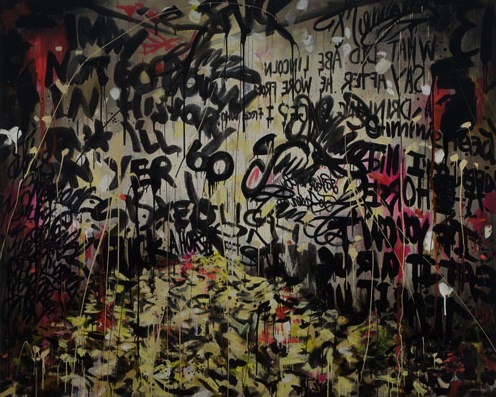
The Nest, 2010 (Image via Deitch Projects)
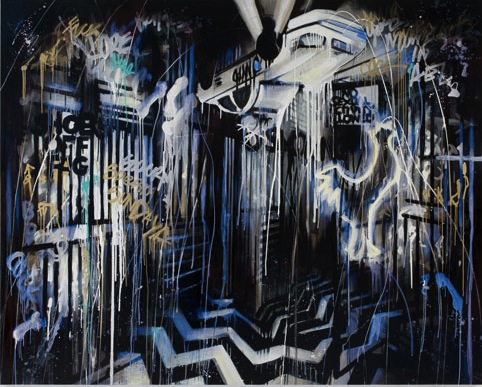
The Cock, 2010 (Image via Deitch Projects)
Wednesday, June 9th, 2010
Thing Quarterly Collaborates with Chris Johanson + James Franco
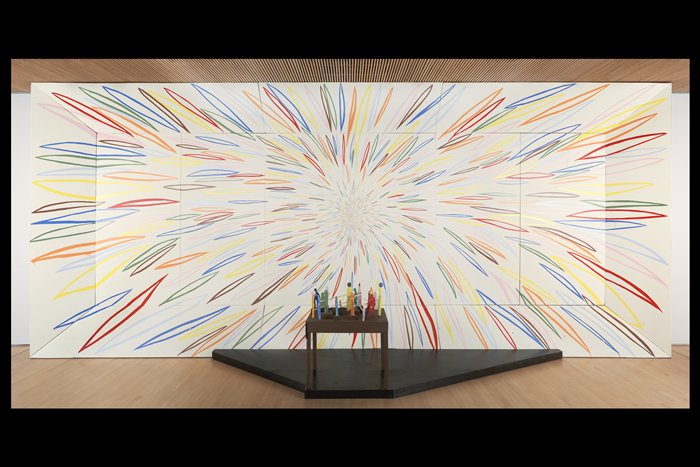
Chris Johanson (Image via The Thing)
THE THING is gearing up to release the first installment of their new subscription cycle. Each year, the quarterly “periodical” collaborates with four artists to create limited art objects that each incorporates text. Issues 11-14 kick off with Chris Johanson, followed by fashion design team Doo.ri, artist Matthew Higgs, and will wrap up with actor/artist James Franco, who has shifted his recent focus to intellectual and artistic endeavors outside of acting.
To celebrate the launch of issue 11, Chris Johanson will host an event June 17 at SFMOMA, including video and musical performances. The event is free to Thing subscribers, or with museum admission. We’re not sure what Johanson has come up with for his issue yet, but have been promised that “guests can purchase Johanson’s…issue and put it to use while watching video projections of moonrises…”
Get your one year subscriptions here
Wednesday, June 9th, 2010
Historic Haring Mural in Need of Rescue
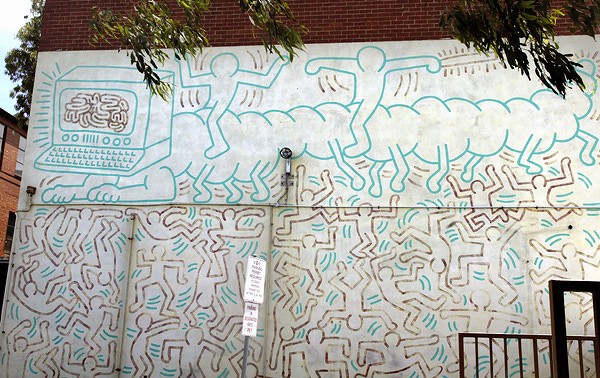
The faded and damaged Haring mural as it looks today. (Image: Andrew De La Rue via Sydney Morning Herald)
The Art Newspaper reports that the last surviving mural Keith Haring painted entirely on his own, and the first project he completed with the assistance of a cherry picker, is in dire need of preservation. Painted in 1984 during Haring’s only visit to Australia, the mural occupies the wall of the former Collingwood Technical College in a Melbourne suburb. Last restored in 1996, the significant work has not been maintained for almost 15 years, and suffers from significant surface lifting and cracking of the paint. Estimates to stabilize the outdoor work are reported at A$25,000 ($22,000 US), with an additional A$1,000 ($900) for annual upkeep.
Several major Australian arts institutions and local municipalities have banned together to raise support for its restoration. “It is our own government who has lapsed in its duty of care,” said one spokesperson, noting that the building is owned by the Victorian State Government and that the mural sits on its heritage registry.
”Yarra’s mayor Jane Garrett said, “The mural is a part of Yarra and inner-Melbourne’s cultural and physical landscape—and we want to ensure it stays that way,” adding that interested parties were in the process of setting up a working group including representatives from the arts community and other interested parties to “discuss the mural’s future and come to a consensus on the most appropriate way to preserve it.”
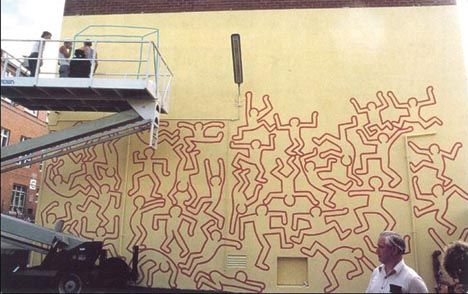
The original mural in progress durning Haring’s 1984 visit to Melbourne (Image via The Art Newspaper)
In more productive news, a new series of Keith Haring adhesive wall graphics (pictured below) has been released by Bilk, with several different designs available from $18 – $55.
Monday, June 7th, 2010
Germano Celant Contributes to upcoming KAWS Book
KAWS‘ first comprehensive print survey is set to release September 21 via Rizzoli, one of the most respected names in art publishing. The book includes contributions by Monica Ramirez-Montagut, curator at The Aldrich Contemporary Art Museum in Connecticut (where KAWS opens his first museum show later this month) and Germano Celant, whose lengthy credentials include the titles of Director of Fondazione Prada in Milan, Senior Curator of Contemporary Art at the Guggenheim, Artistic Director of the first Florence Biennial in 1996, and Curator of the 1997 Venice Biennale.
This is not the first time Celant has taken an interest in artists who have crossed over from the street. In 2002 he curated Barry McGee’s first major international solo museum exhibition at Fondazione Prada, and interviewed the artist for the show’s catalog.
Celant’s interest in artists whose roots run deep in graffiti culture is easy to understand. His own contributions to contemporary art span more than 40 years, and can be traced back to the 1960s, when he spawned Arte Povera in Italy. Created in support of artists who were creating in mediums beyond those historically accepted, the loose-knit movement (literally translated as “poor art”) championed art made without any material, theoretical, or economic restraints, that, much like modern graffiti, could thrive free of the art-establishment or market place. It’s worth noting, just as many of that movement’s pioneers eventually reached larger levels of critical recognition and financial success, so have artists like KAWS and McGee.
